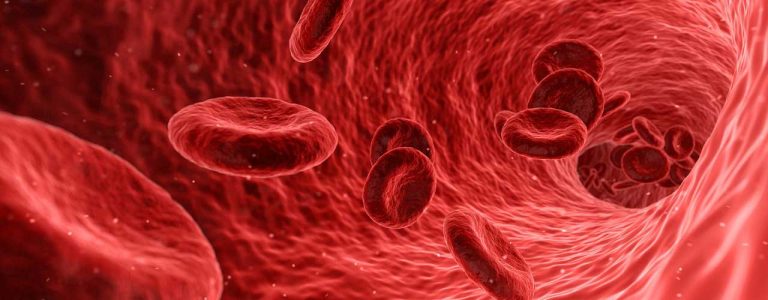Fentanyl and Xylazine: The Increasing Dangers and Treatment Options
In the last 10 years, the dangers of Fentanyl exposure have become increasingly more wide spread, including and especially across public platforms and social media.
And though both healthcare professionals and government establishments, including the U.S. Department of Justice Drug Enforcement Administration (DEA), the Federal Drug Administration (FDA), and the Centers for Disease Control and Prevention (CDC), continue to report on the dangers of even limited exposure to Fentanyl, the numbers of deaths related to the drug continue to rise – the death rate being more than 106,000 in the U.S. in 2021.
One of the newest dangers for drug users across the country can be found in a Xylazine inclusion – commonly found in combination with Fentanyl, cocaine, or heroin. The inclusion of Xylazine in opioids have government regulatory agencies and healthcare professionals concerned for the increasing dangers these combinations are causing, especially as widespread fatal overdose rates across the country continue to soar.
In this article, we’ll be taking a closer look at both Xylazine and Fentanyl, providing you with the risk factors associated with these drugs, as well as treatment support options for long-term recovery and rehabilitation.
What is Fentanyl and Xylazine?
Let’s start by identifying both Fentanyl and Xylazine, giving you an accurate look at the similarities and differences between these drugs.
Fentanyl is a powerful synthetic opioid drug, commonly used (and approved by the FDA) for pain relief and anesthetic. Fentanyl has a few street names, including “He-Man,” “Dance Fever,” and “Goodfella,” and is approximately 100x stronger than morphine.
Xylazine is a non-opioid tranquilizer, approved for the use in veterinary medicine for sedation and pain relief. It is also commonly referred to as “tranq” or “tranq dope,” and though not currently classified as a controlled substance, it is not approved for use in humans.
Xylazine’s Impact on the Effects of Opioids
On its own, Xylazine is a central nervous system depressant, delivering effects such as slowed breathing and heart rate, drowsiness, and amnesia. According to a research study conducted by the NIDA Intramural Research Program, even low doses of Xylazine can cause a definitive decrease in body temperature and brain oxygen levels.
As this drug was never developed with the intent for human consumption, there are limited studies on the long-term effects it can deliver with chronic use alone, however, with its emerging popularity in combination with drugs such as heroin and fentanyl, medical professionals are conducting further research to explore the considerable risks associated with the pairing.
When combined with opioids such as Fentanyl and heroin, the health risks behind Xylazine, such as rapid loss of oxygen, are considerably exacerbated and have contributed to more 100,000 annual deaths in the U.S. Researches have noted that when combined with opioids, Xylazine actually prevents the mechanism responsible for delivering oxygen into the brain after initial opioid exposure, leading to the prolonged decrease in brain oxygen, and in fatal cases, death.
Common Risks Associated with Xylazine
As we mentioned, Xylazine’s intended use is in veterinary medicine and is a powerful pain reliever and sedative for animals, however, when combined with opioids, it can cause numerous and considerable risks, including:
- Dry Mouth
- Drowsiness
- Hypertension
- Tachycardia
- Respiratory Depression
- Soft tissue injuries (from injections)
With repeated use, Xylazine can also cause individuals to develop skin ulcers and abscesses, due to the direct vasoconstriction of vessels that deliver blood and oxygen to the skin.
As with chronic and repeated use, opioids and combination opioid drugs are highly addictive as they activate the reward centers in the brain. Opioid addictions can lead to serious and sometimes fatal withdrawal symptoms, so it’s important to work closely with a professional addiction treatment center for personalized treatment plan options.
Treatment Options for Heroin & Fentanyl at Cornerstone
At Cornerstone, our team of medical professionals have worked with thousands of patients over the years, developing personalized treatment plans backed by clinically-proven methods of therapy, withdrawal and detox management, and treatment programs.
When it comes to heroin and fentanyl treatment, we take the time to understand each and every patient, providing them with not only the treatment option they need, but the support and trust they’re entitled to achieve long-term results.
Explore our extensive and clinically-backed drug rehabilitation treatment options for those suffering from heroin and fentanyl addiction.
Medication-assisted treatment (MAT), also known as medication-assisted detoxification, utilizes FDA-approved prescriptions to help patients through their withdrawal process, both for alcohol and substance abuse.
At Cornerstone, this type of treatment is always conducted by a licensed doctor or medical professional and can help those suffering from the painful side effects of withdrawal.
In an inpatient treatment, our patients remain at our treatment center for a specific period of time, allowing us to guide them through their treatment plan options under the supervision of a medical professional.
Inpatient treatments allow patients to remove themselves from the high-risk, external situations that they previously faced, giving them a safe, supportive environment so they can tackle their addiction and mental health issues.
Partial hospitalization programs help patients suffering from a variety of issues, including substance abuse disorders, mental disorders, and even behavioral disorders. With this treatment, patients won’t need complete hospitalization and can be the transition support they need to get back to a healthy, sober life.
Intensive outpatient treatment programs are designed to address addiction problems at an individual level, delivering recovery skills and therapy that work best for a patient’s unique lifestyle. At Cornerstone, our IOP treatment program helps to build sobriety through meaningful education and hands-on support from our medical professional team.
Dual diagnosis treatment program can help a patient suffering from addiction to alcohol or substance abuse better understand their issues as the focus relates back to mental health. Our team of medical and mental health professionals deliver recovery treatment that’d uniquely designed to address both addiction and mental health issues – often through a coordinated treatment approach.
An extended care program is designed to be the intermediary support for post-drug and alcohol treatment and returning to everyday life. The goal for an extended care and relapse prevention program is to offer the personalized support and confidence needed in a completely non-judgmental space.
Government and Health Agencies’ Response to the Widespread Threat
As we mentioned, the health and fatality effects that can occur from Xylazine and opioid combination is increasing, which has required the White House to release a National Response Plan in order to address the growing threat of Xylazine and Fentanyl.
According to the plan, “the monthly percentage of illegally manufactured fentanyl-involved deaths with xylazine detected increased 276% (from 2.9% to 10.9%) between January 2019 and June 2022,” leading professionals to focus on six pillars of action, including:
- Testing
- Data Collection
- Evidence-Based Prevention, Harm Reduction, and Treatment
- Supply Reduction
- Scheduling
- Research
Access Professional Treatment Care at Cornerstone of Southern California
If you or a loved one is struggling with a Fentanyl, heroin, or combination drug addiction, it’s time to contact the medical professional team at Cornerstone of Southern California.
Our professional treatment facility provides detoxification, extended care, primary residential care, day or evening outpatient programs, and more for individuals looking for help regaining their life and tackling their addictions.
Give our team a call today and find the help and support you’ve been looking for.
Fentanyl and Xylazine FAQs
Q: What is Fentanyl and what does it look like?
A: According to the DEA, “Fentanyl is a strong, synthetic opioid drug that is approved by the FDA for use as an analgesic and an anesthetic.”
Fentanyl can be found in powder or pill form and is commonly mixed with other opioids. It appears much like any other drug.
Q: What are the side effects of Fentanyl?
A: Possible side effects of Fentanyl can include:
- Constipation
- Headache
- Dizziness
- Fatigue
- Nausea
- Vomiting
- Lack of appetite
- Skin rash
Q: What is Xylazine and what does it look like?
A: Xylazine is an FDA-approved sedative used in veterinary medicine to relieve pain in animals. This drug can appear in a few different forms, including in powder-format, as a pill, and in liquid form.
Q: What are the side effects of Xylazine in humans?
A: Xylazine is not recommended for use in humans and therefore can cause serious and sometimes fatal side effects, including:
- Dry Mouth
- Drowsiness
- Hypertension
- Tachycardia
- Respiratory Depression
- Soft tissue injuries (from injections)
What are the withdrawal symptoms of Xylazine?
A: Common withdrawal symptoms from Xylazine, can vary based on individual, however, they include:
- Anxiety
- Irritability
- Rapid heart rate
- High blood pressure
- And dizziness
Q: What is the “tranq” drug epidemic?
A: “Tranq” is the street name for Xylazine and due to its considerable fatality reports, especially when combined with opioids, the White House has enacted it an emerging threat, accelerating the current deadly U.S. drug crisis.
Q: Why does Xylazine cause wounds?
A: With repeated use, Xylazine can also cause individuals to develop skin ulcers and abscesses, due to the direct vasoconstriction of vessels that deliver blood and oxygen to the skin.






